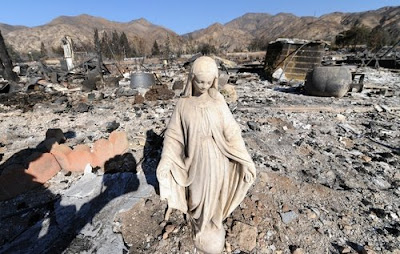Archeologists have discovered evidence that at least one ancient culture, hundreds of years before Christ, believed in the separation of the body and the soul.
From the New York Times:
In a mountainous kingdom in what is now southeastern Turkey, there lived in the eighth century B.C. a royal official, Kuttamuwa, who oversaw the completion of an inscribed stone monument, or stele, to be erected upon his death. The words instructed mourners to commemorate his life and afterlife with feasts “for my soul that is in this stele.”
University of Chicago archaeologists who made the discovery last summer in ruins of a walled city near the Syrian border said the stele provided the first written evidence that the people in this region held to the religious concept of the soul apart from the body. By contrast, Semitic contemporaries, including the Israelites, believed that the body and soul were inseparable, which for them made cremation unthinkable, as noted in the Bible.
Circumstantial evidence, archaeologists said, indicated that the people at Sam’al, the ancient city, practiced cremation. The site is known today as Zincirli (pronounced ZIN-jeer-lee).
Other scholars said the find could lead to important insights into the dynamics of cultural contact and exchange in the borderlands of antiquity where Indo-European and Semitic people interacted in the Iron Age.
The official’s name, for example, is Indo-European: no surprise, as previous investigations there had turned up names and writing in the Luwian language from the north. But the stele also bears southern influences. The writing is in a script derived from the Phoenician alphabet and a Semitic language that appears to be an archaic variant of Aramaic.
The discovery and its implications were described last week in interviews with archaeologists and a linguist at the University of Chicago, who excavated and translated the inscription.
“Normally, in the Semitic cultures, the soul of a person, their vital essence, adheres to the bones of the deceased,” said David Schloen, an archaeologist at the university’s Oriental Institute and director of the excavations. “But here we have a culture that believed the soul is not in the corpse but has been transferred to the mortuary stone.”
There’s more intriguing information at the Times link.
Photo: University of Chicago/New York Times.

